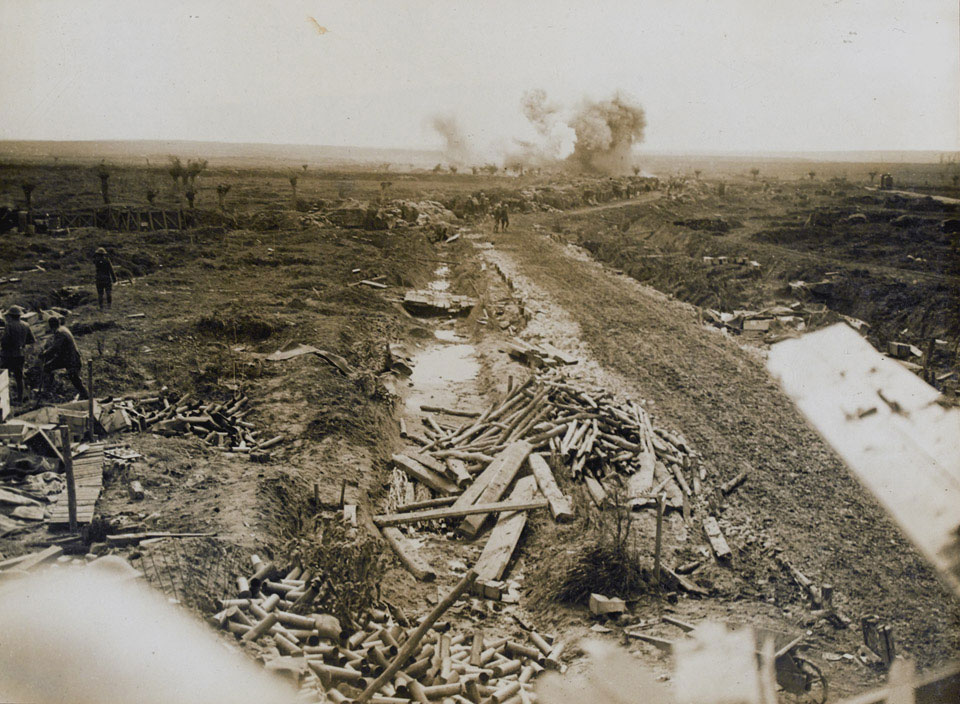
Online Collection
'Battle of the Menin Road. Scene on a road over newly captured ground, September 1917'
Photograph, World War One, Western Front (1914-1918), 1917.
The shattered wasteland of the Western Front is visible in this photograph of the land around the Menin Ridge in Flanders. By 1917 the entire region had been devastated by shell fire.
A major operation during the 3rd Battle of Ypres (or Passchendaele), the Battle of Menin Road (20-25 September 1917) witnessed the first use of General Herbert Plumer's 'bite and hold' strategy. After repeatedly trying to break through on a wide front and being halted by the deep German defence system, Plumer instead selected a small part of the German front line. This would be heavily shelled and then attacked in strength. The advancing troops would stop once they had penetrated 1,500 yards into the German lines. At this point they would dig in, and another wave of attacking troops would pass through them to attack the next objective. The original attackers would then consolidate the ground they had taken, and become the new reserve for future advances.
Using this tactic became possible when more artillery was deployed, thanks partly to the ground drying out between late August and September. Additionally, it was enhanced by using more, better aircraft, carrying out close air support and air defence, contact-patrol, counter-attack patrol, artillery observation and ground-attack. It meant that British soldiers did not move beyond where they could be supported, and consolidated gains made.
This meant that when the German counter-attack was launched, instead of finding a mass of exhausted and disorganised men at the limit of the Allied advance, they would find a well organised defensive line still in range of supporting artillery.
The Menin Road operation was a success with most of Plumer's objectives being captured on the first day. German counter-attacks were repulsed the first and second days of the operation. Three quiet days followed. The battle ended with a final German counter-attack on 25 September, again repulsed without serious problems.
From an album of 76 official photographs.
NAM Accession Number
NAM. 1999-11-70-21
Copyright/Ownership
National Army Museum, Out of Copyright
Location
National Army Museum, Study Collection
Object URL
https://collection.nam.ac.uk/detail.php?acc=1999-11-70-21

